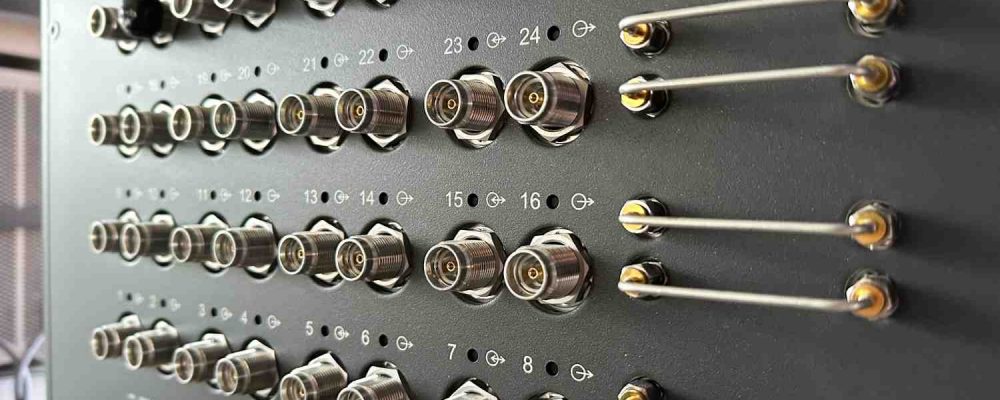Summary : Looking to cut IT expenses without compromising performance? These 6 pro tips help businesses drastically reduce network costs. From optimizing structured cabling and leveraging cloud solutions to adopting energy-efficient hardware and proactive monitoring, each strategy lowers overhead while boosting efficiency. Partnering with trusted vendors and planning for scalability further maximizes ROI. By implementing these cost-saving measures, organizations can streamline operations, extend equipment life, and achieve reliable, budget-friendly network management that supports long-term growth.

Most businesses don’t realize how much they spend on network infrastructure. The costs sneak in quietly. A few hundred here for a new switch, a few thousand there for emergency cabling, and suddenly, network costs take a significant chunk of your budget.
The expenses pile up from hardware and cables to vendor contracts and unexpected downtime. And often, they go unchecked.
This isn’t another vague promise of magical savings. This is a real-world guide. These six pro tips offer grounded strategies that work- practical steps any business can implement without compromising performance.
An inefficient network drains more than just money. It chips away at productivity. It frustrates users. It limits your ability to scale. And it leaves you vulnerable to rising maintenance costs.
Network infrastructures must keep up as hybrid work models expand and security risks evolve. Add in the demand for seamless cloud integrations, and the cost of inefficiency multiplies quickly.
When your network isn’t optimized, every issue, no matter how small, creates ripple effects. Slower speeds mean longer task times. Unstable connections mean missed opportunities. And each unplanned outage? A costly disruption.
Start with a network audit. It’s the most straightforward way to see where your money’s disappearing. A comprehensive network audit reveals what you have, what you don’t need, and what needs to be fixed.
A thorough audit includes:
Audits often uncover surprises. You may still be powering switches that no longer connect to anything. Or you’re paying for more bandwidth than your team ever uses. Your layout makes troubleshooting a nightmare.
Over time, these little inefficiencies snowball. Regular audits act like check-ups for your infrastructure. They ensure everything runs smoothly and costs stay in check. Add them to your quarterly or bi-annual IT routine.
Modular infrastructure is one of the smartest long-term investments in your network. Why? Because it gives you flexibility.
Instead of ripping and replacing entire systems every few years, you build modular cabling systems, stackable switches, and adaptable rack designs with blocks. You can add, remove, or upgrade components without major overhauls.
Imagine your company grows by 20 employees. With modular design, you plug in additional switch modules and extend your structured cabling—no need to redo the entire network.
Key benefits:
Ideal scenarios include remote offices, seasonal workforce surges, or businesses scaling in phases. A modular approach is also far easier to maintain, meaning fewer technician hours and reduced service costs.
You’re already behind if you’re still relying on manual checks to know when something goes wrong. Manual processes waste time and let problems fester.
Automated monitoring systems do the heavy lifting. Tools based on SNMP (Simple Network Management Protocol), cloud dashboards, and AI analytics continuously scan your network. They detect unusual traffic, device failures, and real-time performance issues.
Real-world example: A switch fails at 2 AM. Without automation, you’d discover when your team logs in and can’t connect. With automation? You’d get a real-time alert, possibly even a self-correcting action like rerouting traffic temporarily.
Why it matters:
Over time, automation cuts both labor and repair costs. It also improves user experience since outages are either prevented or resolved quickly.
Working with multiple vendors is a good way to get specialized service. But too often, it results in overlapping services, inconsistent performance, and bloated bills.
Vendor consolidation simplifies operations. Fewer contracts. Fewer invoices. And most importantly, one clear point of accountability when something goes wrong.
Let’s say you use one vendor for cabling, another for installation, another for monitoring, and yet another for troubleshooting. When a problem arises, it can take hours to determine who’s responsible. That’s not just frustrating, it’s expensive.
Consolidation benefits include:
You gain efficiency and cost clarity when one vendor handles everything from installation to monitoring. Focus on strategic partnerships with vendors that offer bundled solutions aligned with your goals.
Bandwidth is one of the most misunderstood expenses in network management. Businesses often overpay for speed they don’t use or misallocate what they have.
Poor routing leads to network congestion, latency, jitter, and slow performance. That frustrates users and prompts costly calls to IT support. Worse, it can cause managers to assume they need more bandwidth, when they need more intelligent allocation.
Smart strategies include:
You extract full value from your existing infrastructure by tuning routing paths and optimizing how traffic moves through your network. This often eliminates the need for bandwidth upgrades and helps avoid ISP overcharges.
Cloud-based networks aren’t just about convenience. They can deliver substantial cost savings, especially when applied strategically.
Whether remote file access, VoIP phone systems, or virtual firewalls, cloud-integrated solutions shift your IT spend from CapEx (hardware) to OpEx (subscriptions). This allows for scalable, usage-based pricing.
With cloud:
Hybrid networks (on-prem + cloud) allow you to maintain control over sensitive data while benefiting from the flexibility of cloud services.
Security is key, of course. Use secure VPNs, apply encryption protocols, and enforce access control policies to ensure your cloud-integrated environment stays safe and compliant.

Legacy hardware is a hidden cost trap. It consumes more power. It crashes more often. And it usually lacks compatibility with modern security protocols.
Signs it’s time to upgrade:
Modern alternatives like Power-over-Ethernet (PoE) switches combine efficiency with reduced wiring. Newer access points support faster speeds and better coverage, meaning fewer devices are needed overall.
Strategic replacement avoids the sticker shock of a full rip-and-replace. Instead, rotate out aging components in waves- starting with the worst offenders.
Network design is your foundation. And poor design is often the root of recurring issues.
Take cable pathways, for example. If cables are haphazardly run without future access in mind, any upgrade or repair becomes a labor-intensive nightmare. That’s money out the door.
Or power sourcing, putting too many devices on a single circuit can trigger outages or damage hardware. A solid plan avoids all this.
Professional design accounts for:
Overplanning now could save you thousands in troubleshooting, rework, and downtime later.
Myth: Cheaper hardware will save you money.
Reality: Budget equipment often leads to early failures, missed features, and constant maintenance calls. You end up spending more in the long run.
Myth: DIY network setups work fine for small businesses.
Reality: Even small businesses benefit from professional setups. DIY networks often suffer from poor security, inconsistent performance, and scalability.
Myth: The cloud always reduces costs.
Reality: While cloud solutions offer flexibility, they’re not universally cheaper. Analyze your usage, data volume, and uptime needs before switching.
Reducing network costs isn’t about taking shortcuts. It’s about building smarter, leaner, and more flexible infrastructure.
These six tips (plus bonus strategies) give you a practical blueprint, from regular audits and modular design to intelligent automation and vendor consolidation. No fluff. Just results.
Need a more straightforward path forward? Contact Network Drops for a custom consultation. Our experts specialize in cost-efficient, performance-driven network design and optimization.
Hardware inspections, bandwidth analysis, cabling condition checks, device mapping, and layout evaluations. The goal is to identify inefficiencies, risks, and areas for cost savings.
Frequent downtimes, slow performance, rising support costs, and aging hardware are all red flags. If your IT budget keeps growing with no noticeable improvement, it’s time for a review.
Security vulnerabilities, compatibility issues, higher energy usage, frequent failures, and poor performance. Plus, many older devices are no longer supported.
It varies by business, but many reduce data plan upgrades and avoid paying for unused bandwidth. Combined with fewer service disruptions, the savings add up quickly.
Yes. With proper planning, you can implement hybrid solutions that enhance older setups. This includes adding VPNs, using cloud-hosted tools, and gradually phasing in virtual services.
"*" indicates required fields
Scott Fcasni is the driving force behind Shock I.T. Support’s commercial datacomm cabling division, delivering expert solutions that power reliable, high-performance network infrastructures. With extensive experience in structured cabling and a commitment to precision, Scott ensures that every project—whether for small businesses or large enterprises—meets the highest standards of quality and scalability.